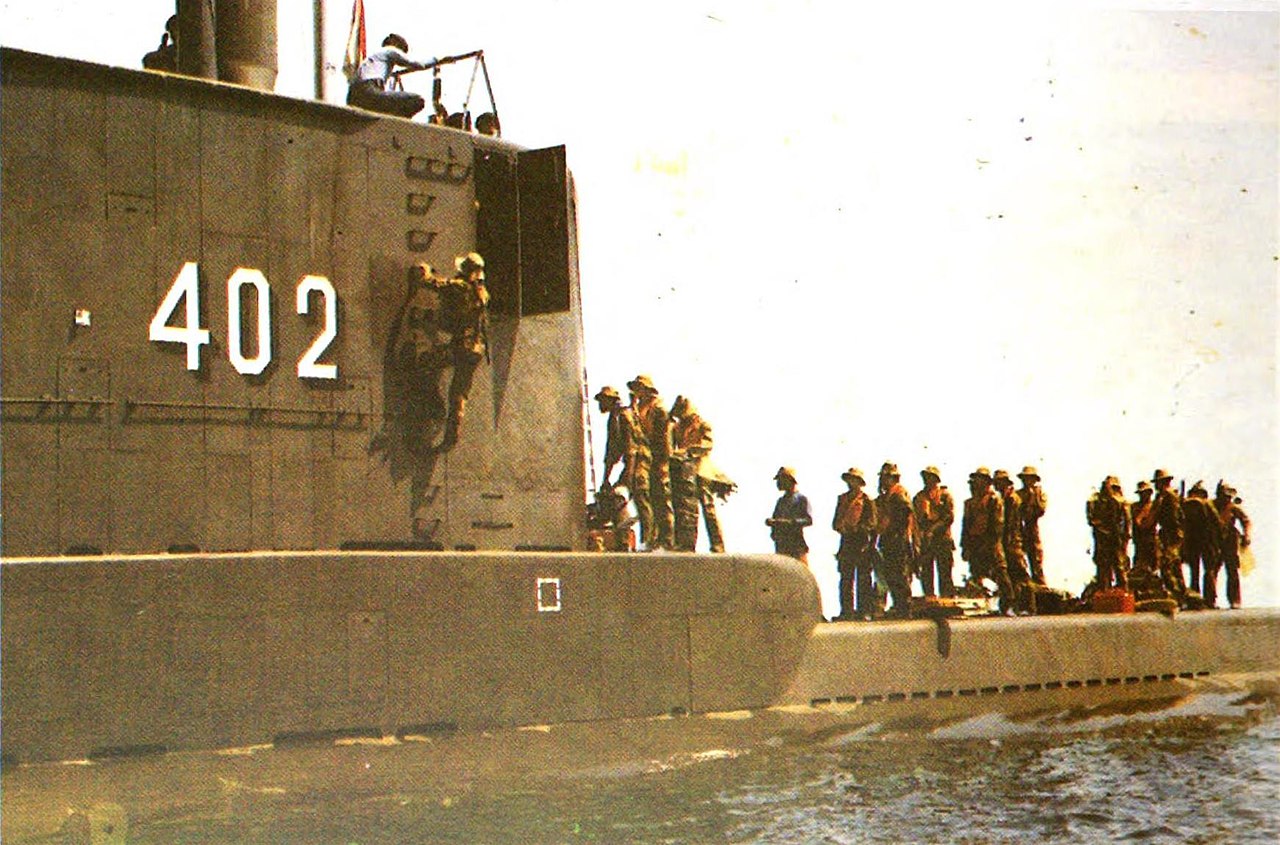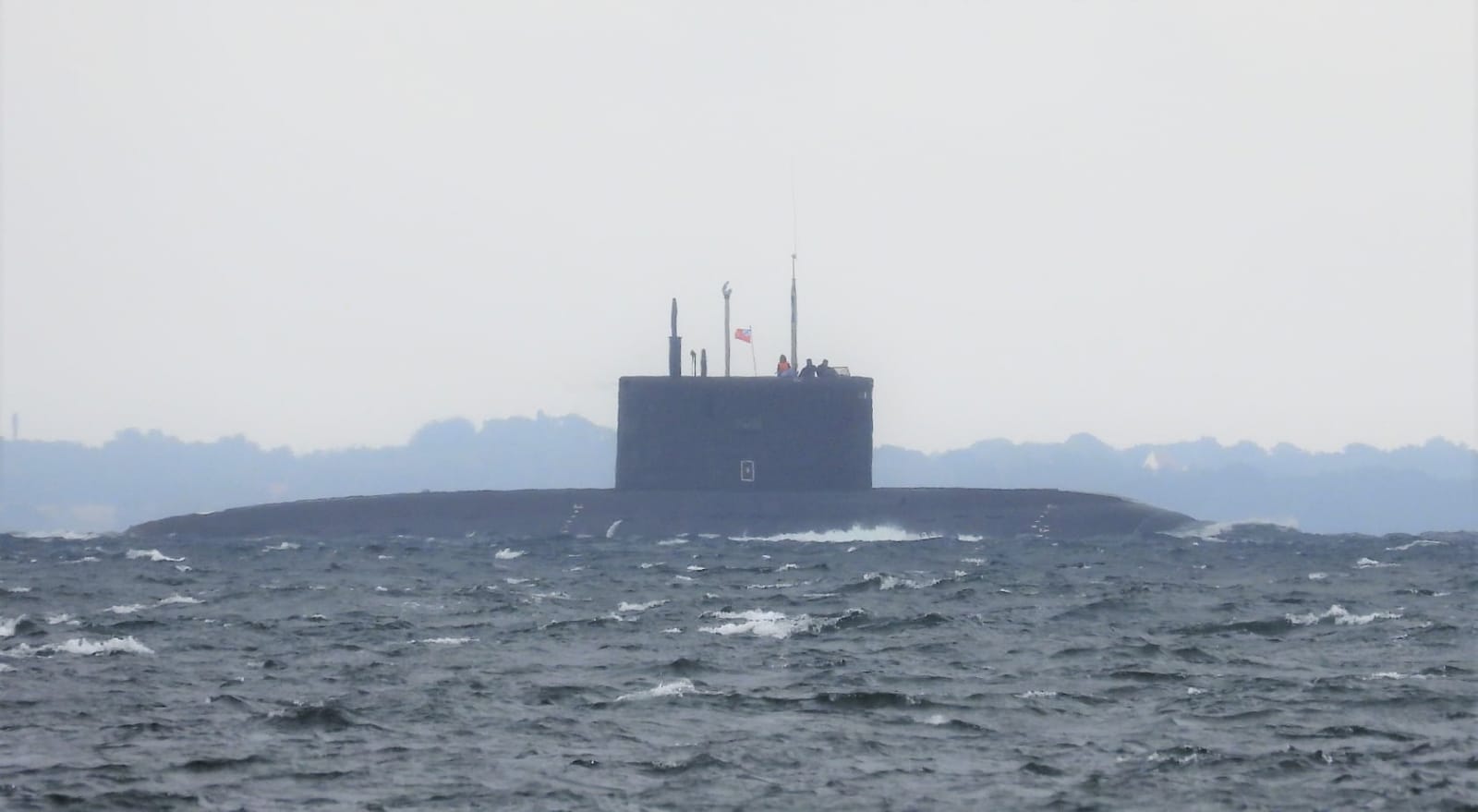As time and oxygen are both running out, it is more likely that the fate of the occupants of the Titan submersible is going to be eerily similar to those onboard Titanic, whose wreckage in the Atlantic Ocean they were en route to.
Former submariners, while holding on to hope, paint a grim picture of the rescue and point out how the crew of the ill-fated submarines often sink with the vessel as it is difficult to mount a timely rescue.
Most recently, in 2021, an Indonesian submarine KRI Nanggala 402, went missing with a crew of 53 on board. Before that, in November 2017, an Argentine submarine went missing with 44 crew members in the South Atlantic. Its wreckage was found almost a year later at a depth of 800 meters.
In 2000, the Russian nuclear submarine Kursk suffered internal explosions and sank during maneuvers in the Barents Sea. Most of its 118-strong crew died instantly, but 23 men fled to a rear compartment before they later died, mainly of suffocation.
The Submarines are mostly voluntary arms in most of the world’s navies. The “isolation and prolonged periods of being without contact” are not meant for the faint-hearted. The crew is working in an altered environment.
The diesel submarines, which have to surface once every 24 hours, come to the surface to replenish oxygen during the night. It is during this time it is most susceptible to detection or an attack, so the whole crew has to be awake. The crew changes their clock by 12 hours – they sleep during the day and maintain vigil during the night.
“You are trained for isolation and remaining without contact. But, when you are stricken or lost, or the vessel has been damaged, you pretty much resign to fate. Submarine rescues have happened at less than 600 meters of depth. But it is extremely unlikely to be rescued,” opined Indian Navy Captain Anurag Bisen.
Silence Of The Steel Shark
Submarines are designed for stealth. Even their crew are trained to walk silently without making any sound, particularly any metal clanging, as sound travels faster in water, and loud noises will give away the submarine’s location. That is why the crew also speaks softly.
When submarines go out into the sea, they do a “Check” report, i.e., every 24 hours, they send out just one-word “check.” The frequency of making contact can be pre-decided. On sensitive missions, even this contact is not made. So, in case of emergency, the crew is mostly on its own.
Hence, proximity to shore or other warships makes locating a submerged vessel easier and faster. But even that could not save the crew of the fateful Russian nuclear submarine Kursk.
In August 2000, the Russian Navy was conducting exercises in the Barents Sea, a body of water bordering the country’s northwest corner. The Kursk, with 118 crew members on board, went down after two explosions likely to be caused by a peroxide leak in a faulty test torpedo.
The exercising fleet noted the explosions, but it was not after a few hours that the naval leadership realized something was amiss and mounted a search for the Kursk.
“One of the key safety features of submarines is that it is divided into compartments, and they can be isolated to contain a disaster. But it is only when the submarine is in shallow waters that a rescue mission can be carried out successfully. The crew of the Russian submarine Kursk could have been saved as there were many warships in the vicinity,”
Captain Bisen told the EurAsian Times in an interview. Captain Bisen commanded a Kilo-class Russian submarine and was posted in Russia when the disaster happened.
“Crucial time was lost during the search and rescue as President Vladimir Putin refused help from the UK Navy, which had the resources to mount the rescue,” Captain Bisen added. Putin accepted the offer, albeit it was a bit late for the crew.

After the submarine sank, rescue submersibles tried but failed to dock with the Kursk due to strong underwater current, poor visibility, and the angle at which the submarine was tilted. It was only after a week that the submarine could be accessed with the help of foreign experts.
The divers cut the Kursk open only to find that no one had survived. It was later found that 23 crew members survived the initial blast and isolated themselves in the rear compartment of the submarine but were asphyxiated due to a fire and a lack of oxygen.
Retired Indian Navy Submariner Commodore Ajay Jai Singh told the EurAsian Times: “In submarine rescue is time critical as oxygen is limited. During disasters, no machinery is working, the oxygen content will reduce, and people will find it difficult to breathe. There could be flooding, power failure means it can be dark, and people might be injured or dead. Overall, it is a grim situation.”
The Kursk had a rescue buoy that would have been automatically activated during an emergency, but it had been disabled a year prior.
There are two ways that the crew in submerged submarines can be rescued. Firstly, they can open the hatch wearing pressurized escape suits (that every crew member in a submarine is issued), and they can float to the surface.
The second way is to attach a Deep Submergence Rescue Vehicle to its surface and bring the crew members.
But all this can happen only till 500-600 meters of depth. Beyond that, the submarine’s hull runs the risk of being crushed by the enormous water pressure.
The Case Of Missing Indonesian Submarine
The crew of submarines often undergo simulated training for dealing with emergencies like fire and flooding. But more often than not, when a disaster strikes, “time criticality” and availability of rescue resources make it difficult to rescue the crew.
“When the Indonesian submarine went missing, it took time to locate it, even though it was participating in an exercise. Another contingency factor is to ensure enough rescue elements reach the location in time, which not every country has,” Commodore Singh explained.

Indonesia lacked the resources like Deep Submergence Rescue Vehicles (DSRV). India sent its DSRV, but reaching a location that is 2000 miles away would take 4-5 days, a time which can prove to be critical for the crew.
The German-made Indonesian submarine had lost contact during a military exercise in the Bali Strait. The wreckage of the submarine was later located at a depth of 850 meters and had broken into three parts.
“There is a famous saying – submarines are safe until you forget they are dangerous. There is no room for negligence. A single emergency onboard, be it hydraulic, electronic breakdown, power failure, or flooding, can cripple a lot of systems. And if something goes wrong, the reaction time is very low, it sinks very fast like a stone, within a matter of a few seconds,” Commodore Singh said. The crew of any submarine undergoes escape training.
“Let us imagine that an emergency has happened on board. If the submarine goes below 600-800 meters, its hull is crushed as it is not designed to withstand such pressures. If it lands on a sea bed less than that, then remember the descent was not controlled. The submarine can go down with a thud or at an angle, causing more damage,” Commodore Singh added.

Submarines – Working Against The Medium
Submarines submerge into water (the medium) through “control sinking.” The submarines become “negatively buoyant” by flooding. When they reach the desired depth, they expel some water to become “neutrally buoyant.”
When it needs to surface, they expel water to become “positively buoyant.”
“The submarine can use propellants to come to the surface, but the submarine still needs to expel water. The submarine has redundancy for hydraulic failure and an air pressure system. But if there is a complete failure, you are a gone case,” Captain Bisen said.
Submarines are the most significant part of a country’s nuclear deterrence, as unlike aircraft or surface-based missiles, it is difficult to trace a submarine as oceans largely remain opaque. This stealth which makes the submarine lethal, also makes any accident onboard catastrophic.
As Commodore Singh puts it: “It sounds very pessimistic and distressing. But that is a fact. The depths are very unforgiving.”
- Ritu Sharma has written on defense and foreign affairs for over a decade. She holds a Master’s Degree in Conflict Studies and Management of Peace from the University of Erfurt, Germany. Her areas of interest include Asia-Pacific, the South China Sea, and Aviation history.
- She can be reached at ritu.sharma (at) mail.com




